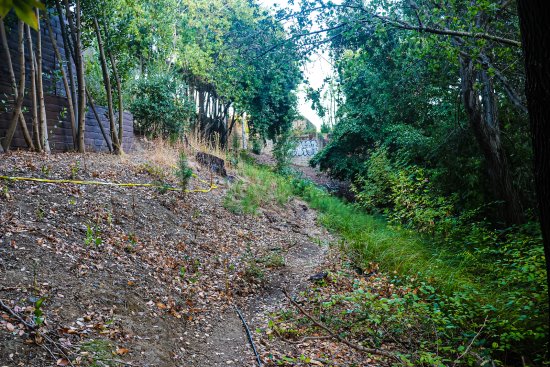
| ||||||
Chevron's plans had been enthusiastically approved by the Orinda Planning Commission on July 12, after the commissioners heard public comments both in support of and in opposition to the project. The project will convert empty service bays at the station that have been unused for nearly three decades into an ExtraMile convenience store.
As part of the plan, Chevron said it would transfer title to the creekside land behind the station to the city and provide an access to the creek alongside the station. If the city did not accept the land, Chevron said that they would go ahead with their project, but would not allow access to the creek over their property.
Controversy has focused on a few aspects of the project. The transfer of the land and implications concerning liability for the area is of concern to the city. Some members of the public expressed concern that the presence of a 24-hour store close to the entrance to Highway 24 and the sale of alcoholic beverages would encourage more crime in the city, and others were concerned that the convenience store would not sell nutritious fresh food and isn't a necessary addition to Orinda.
The project is enthusiastically supported by the Friends of Orinda Creeks, who view the proposal to transfer land beside San Pablo Creek to the city as a major step forward toward the revitalization of the creek, which has been one of the most wanted improvements to downtown Orinda expressed by members of the public as the city moves forward on downtown development.
Michael Bowen, president of Friends of Orinda Creeks, stated that "for the first time in a very long time, or ever, a private business owner is `all in' on downtown development and creek restoration." Bowen suggested that city staff had omitted some facts regarding the land transfer. According to Bowen, the city already has an easement over the land and is the existing floodplain manager. Bowen told the council that there is recreational immunity for public parks, trails, and so forth under the California Government Code. The council members expressed interest in hearing about that immunity in greater detail between the introduction of the enabling ordinance and its adoption when it returns to the council.
Sandy Pearson reminded the city council about something that occurred in her neighborhood of 20 houses on 60 acres. The city asked the developer to provide a trail, which was liked by the residents, but they did not want their homeowners association to bear the liability for the trail. After "thinking long and hard" Pearson said, the city accepted a donation of the trail land. Since then, she added, "the residents do the trail maintenance, it hasn't cost the city a penny, and there hasn't been any problem."
Council Member Latika Malkani was particularly struck by a comment from Maria Brando, a board member of the Friends of Orinda Creeks, that "it is the job of cities to make beautiful spaces for their residents." Malkani said that she agreed with that.
Council Member Brandyn Iverson said that she supported the project and added, "I really want that creek land. I only support the changes in the zoning if we get the creek," she added, stating that she supported the city taking fee title to the property. Without creek access, she would not support the project.
Roy Hutchinson, president of the Orinda Chamber of Commerce, urged the council to allow the Chevron project to proceed. He said that there is wisdom in working with Chevron, a gigantic commercial property owner. "We no longer have a Starbucks or a Subway," and the approved memory care facility cannot proceed because of rising costs, Hutchinson stated. "Let's get on and make something happen in Orinda for its citizens."
Several representatives of Chevron Corporation were at the meeting to discuss the project. Juliet Don encouraged the council to adopt the changes to the municipal code necessary for the project to proceed. She also noted that although Chevron is no longer required by law to pay a parking in lieu fee because it is located within a half mile of a major transit stop, the company is going to donate the money to the city for pedestrian projects. It was determined that the amount equivalent to the fee would be around $26,000.
There was also discussion between the council and staff about whether the proposed changes to the law would have unintended consequences that might affect other gas stations. However, city manager David Biggs explained that if another applicant came in, such as the 76 Station in Orinda, they would have to meet the criteria of discretionary planning review.
City attorney Osa Wolff said that staff would return to the council with a binding legal agreement for the dedication of the land to take place at a time of the city's discretion, specific indemnity terms both for environmental hazards and for any fact specific thing, such as the retaining wall behind the station. Although ordinances usually come back for approval at the next council meeting after introduction, Wolff said that this may require a longer time. The measure passed with a vote of four to zero, with Vice Mayor Darlene Gee on an excused absence.
Reach the reporter at:
